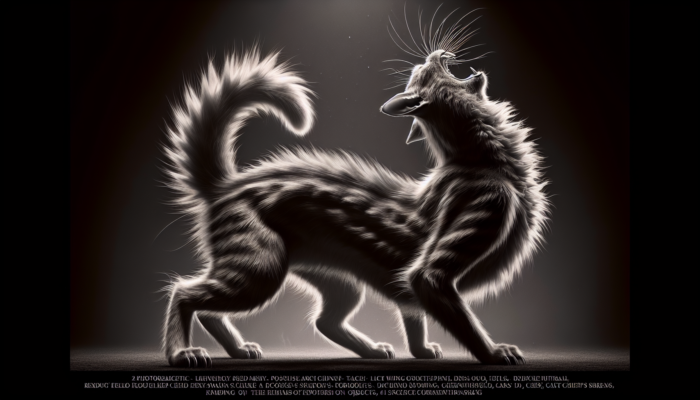Mastering Cat Behavior: Comprehensive Insights and Effective Solutions
If you are encountering challenges with your cat’s behavior, it’s vital to explore the underlying reasons for these actions. Understanding your feline friend’s behavior can lead to more profound insights into their emotional state. By investigating the nuances of cat body language, you can implement effective strategies to calm a nervous cat and create an environment that nurtures their well-being. This deeper understanding will help cultivate a harmonious relationship between you and your pet, fostering mutual trust and joy in your everyday interactions.
Unraveling Cat Communication Through Body Language

The methods of communication employed by cats are intricate and possess multiple layers, making it essential for cat owners to familiarize themselves with their body language. By gaining a deeper understanding of these non-verbal cues, you can significantly strengthen the bond you share with your feline companion. Recognizing even the most subtle signs that indicate whether your cat is feeling content or prefers to be left alone can help you create a more supportive and comfortable environment, tailored to her emotional needs.
In contrast to dogs, which exhibit a wider range of facial expressions due to their diverse facial muscles, cats maintain a more understated approach to emotional expression. Consequently, it is crucial to observe even the slightest shifts in their body language, as these subtle movements can reveal a wealth of information regarding their feelings and mental state. Being attuned to these signals will enable you to respond appropriately to your cat’s needs.
Spotting the Signs That Show Your Cat is Happy and Relaxed
There is nothing quite as delightful as witnessing a happy cat! Numerous clear indicators suggest that your cat is feeling content and comfortable in her surroundings. Some of these signs include:
Tail Position: When your cat approaches you with her tail held high, sometimes with the tip gently curled, it typically signifies a warm greeting and a clear indication of her happiness. This posture suggests she is pleased to see you and feels secure in your presence, which is a wonderful affirmation of your bond.
Relaxed Eyes: A cat that is at ease will display eyes that are not overly wide open and alert; instead, they may be gently closed or shaped like a rugby ball. This relaxed eye position serves as a strong indicator of her comfort level, signifying that she trusts her environment and the individuals around her.
Slow Blinking: Cats often engage in slow blinking as a way to convey friendliness and affection. When you reciprocate this behavior by blinking slowly and gently turning your head away, it reassures your cat that you mean no harm and are a trustworthy companion, enhancing your emotional connection.
Exposing the Belly: If your cat rolls onto her back and displays her tummy, it signifies deep trust and relaxation, not necessarily an invitation for a belly rub! Instead, gently petting her head will maintain her comfort and avoid any unexpected scratches from her sharp claws.
Playful Leaps: When your cat jumps up to greet you, it is a clear invitation for affection and interaction. Ignoring this gesture would be impolite, as it shows her eagerness for some quality time together, reinforcing your bond through play and companionship.
Identifying Signs of Stress or Anxiety in Your Cat
Various factors can lead to stress or anxiety in our feline companions, ranging from encounters with other animals to unfamiliar noises like a washing machine. Common signs that indicate a stressed cat include:
If your cat crouches low to the ground, she may be trying to hide from perceived threats. It is essential to provide her with a safe space where she can retreat and feel secure, as every cat requires a sanctuary to escape to when feeling vulnerable or anxious.
Flat Ears: When a cat flattens her ears against her head, it clearly indicates agitation or discomfort. This posture signals that she feels threatened or uneasy, making it crucial for you to assess the situation and provide her with reassurance.
Wide Eyes: If your cat’s pupils appear dilated and her eyes are wide open, this indicates heightened alertness and anxiety. Stressed cats often prefer to hide rather than seek your company, so it is vital to respect their need for space during such times, allowing them to regain their sense of security.
Recognizing Signs That Indicate Your Cat Feels Threatened

Cats are inherently territorial creatures, and their body language can change dramatically when they feel threatened. Be vigilant for the following behaviors:
Arched Back: A frightened cat will arch her back to appear larger and more intimidating to potential threats, attempting to assert dominance in a moment of fear.
Tense Tail: When a cat is scared, her tail may be held upright and tense, reflecting her heightened state of anxiety and readiness to respond to any perceived danger.
Whiskers and Fur: In reaction to threats, a cat’s fur may stand on end, and her whiskers will point forward, directed towards the object of her fear, enhancing her awareness of the situation. This heightened state of alertness is crucial for her survival instincts.
Extremely anxious cats may hiss or even strike out at whatever is causing their distress. Instead of approaching them hastily, it is wise to assess the situation calmly and, if possible, identify the source of their fear to help alleviate their anxiety.
Engaging in Meaningful Communication with Your Cat Through Body Language
It is entirely possible to engage in a form of dialogue with your cat by accurately interpreting her body language. One essential tip is to avoid making direct eye contact, as this can be perceived as a threat, causing her to feel frightened and unresponsive. Instead, create a relaxed atmosphere by acknowledging her comfort level through your own body language.
If she appears calm, try slowly blinking at her and tilting your head to signal your intentions. If you’re fortunate, your cat may mirror this behavior, further strengthening your bond. This mutual understanding fosters trust and deepens your relationship.
Using harsh vocalizations, such as calling your cat with a sharp “ss,” can irritate her, as she may interpret it as a hiss, which could be perceived as rude and confrontational. Gentle tones and soft calls are more likely to foster a positive response and engage her interest.
Deciphering the Meaning Behind Your Cat’s Purring
When our cats purr, we often associate this soothing sound with happiness and contentment. While this association is accurate, it is crucial to consider their overall body language, as purring can also serve other purposes. Cats may purr when they are seeking your attention or when they feel bored, indicating a desire for engagement or stimulation.
Interestingly, cats may also purr in stressful situations, such as during a trip to the vet. However, this doesn’t always indicate that they are relaxed; at times, they may purr when they are experiencing discomfort or pain. Recognizing the context of their purring is essential for understanding their emotional state.
By closely observing your cat’s body language and understanding the circumstances surrounding her purring, you can gain a clearer insight into her emotional state and overall well-being. This awareness allows you to respond more effectively to her needs, ensuring she feels safe and valued.
The Article: Do You Have Problems With Your Cat’s Behaviour Appeared First On Unity Pets.
The Article Cat Behavior Issues: Solutions for Your Feline Friend Was Found On https://limitsofstrategy.com


Your exploration of cat behavior and the importance of understanding their communication methods resonates deeply with me. As a cat owner, I have often found myself deciphering the subtleties of my feline friend’s body language—an endeavor that has not only enhanced our relationship but has also provided me with significant insights into her emotional well-being.